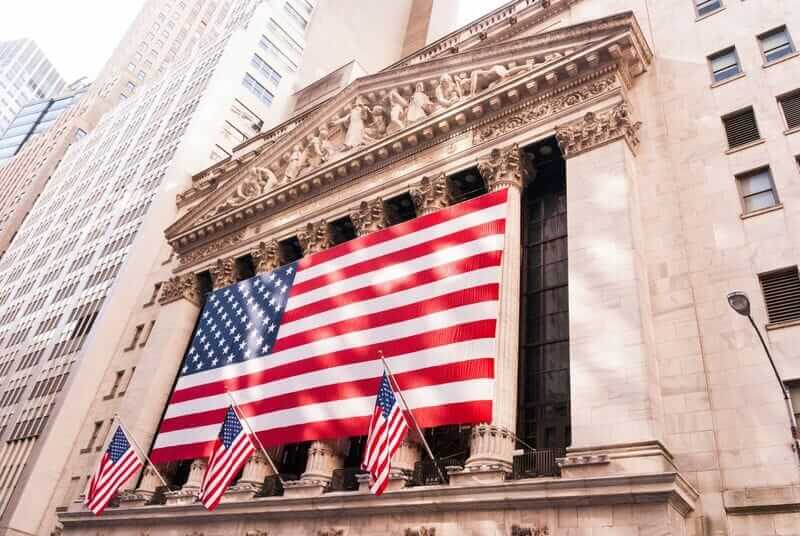
We are now approaching the end of 2023, and if we were to describe the state of the U.S. economy this year, it might best be described as one of “resilience” and “resolve.” Despite numerous challenges, ranging from the seemingly unending war in Ukraine, to the more recent war between Israel and Hamas, China’s ongoing property crisis, still-high inflation at home, and the resumption of student loan repayments – the U.S. economy has proved to be a lot sturdier than most expected at the beginning of the year.
The resilience holds across multiple sectors – including the labor market and consumer spending, as well as the banking sector, which looked quite shaky in the first half amid the regional bank crisis. Another defining moment of 2023 has been the Fed’s resolve to keep rates elevated.
U.S. Economy Performs Better Than Expected in 2023
While Fed Chair Jerome Powell and company were initially caught off guard, as they believed inflation to be “transitory” until about the end of 2021, they have since shown their resolve to fight inflation by raising rates to multi-year highs - even as many observers have been awaiting the so-called “pivot,” or the transition from rate hikes to rate cuts.
The pivot has yet to materialize so far, and while the Fed has paused its rate hikes for now, it has practically ruled out rate cuts anytime soon - and officials have even said that the central bank could raise rates further if the situation so warrants.

At the beginning of the year, not many believed that U.S. real GDP growth would be over 2% in 2023; however, current estimates call for growth between 2.4%-2.6%. Incidentally, while the growth in Europe and China has largely disappointed in 2023, and the latter’s economic rebound has proved to be much more shallow than expected – the U.S. economy has performed much better than expected, contrary to the recession that most economists were expecting.
U.S. Economic Forecast 2024
There are varying forecasts for the economy in 2024. While economists polled by Reuters predict that the world’s largest economy will expand 1.2% in 2024, the Conference Board forecast GDP growth of 0.8% in its November report.
The consensus seems to be that after expanding at over 2% in 2023, U.S. economic growth in 2024 will slow down sharply. There is still a lot of chatter about recession, and brokerages have assigned various odds to a recession in 2024.
Can the U.S. Economy Dodge a Recession in 2024 – Yet Again?
According to the estimates compiled by Reuters, PIMCO has put the probability of a U.S. recession in 2024 at 50%, while Deutsche Bank sees a mild recession in the first half of the year. Among other brokerages, JP Morgan also fears a recession in 2024 - and in fact, is among the most bearish on U.S. stocks, and sees the S&P 500 Index ($SPX) falling to 4,200 by the end of the next year – even as consensus estimates call for low single-digit returns from the world’s most popular index.
On the other hand, Goldman Sachs sees limited risk of a U.S. recession in 2024, and is among the most optimistic on the U.S. and the global economy in 2024. In its report last month, it said, “Goldman Sachs Research’s forecasts for GDP growth in 2024 are more optimistic than the consensus for eight of the world’s nine largest economies, as of Nov. 8, 2023. And notably, our economists expect US growth to outpace its developed market peers again.”
The Yield Curve Test
The yield curve inversion – which occurs when the 10-year Treasury yields fall below 2-year yields – has “predicted” every recession since 1955, barring the odd signal in 1966 where the inversion wasn’t followed by a recession.

Incidentally, the U.S. yield curve inverted in 2019, which prompted several economists to call for a recession in 2020. The recession did happen - but it would be foolhardy to connect a causal relationship with the yield curve, as the slowdown that year was led by the COVID-19 pandemic and the resultant disruption to economic activity.
The yield curve has flashed a red signal” multiple times since 2022, but we haven’t seen a recession as of yet - and if anything, U.S. economic growth has been much better than expected. Notably, according to FactSet, just 53 of the S&P 500 companies that reported earnings between Sept. 15 and Nov. 16 cited the term “recession” during the earnings call. That number had peaked at 237 in Q2 2022, and has now fallen for five consecutive quarters.
Why a ‘Soft Landing’ Looks Like the Most Probable Path
As things stand today, a soft landing looks like the most likely scenario for the U.S. economy in 2024. A slowing economy will continue to put downward pressure on inflation, and - unless energy prices play the role of spoiler - the Fed should start cutting interest rates in the back half of 2024. Overall, while the economic growth next year might be much lower than what we witnessed in 2023, the reasonably strong labor market should keep the recession at bay, at least for now.
On the date of publication, Mohit Oberoi did not have (either directly or indirectly) positions in any of the securities mentioned in this article. All information and data in this article is solely for informational purposes. For more information please view the Barchart Disclosure Policy here.






